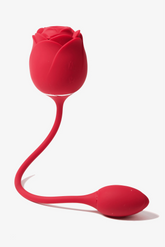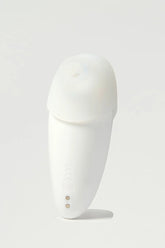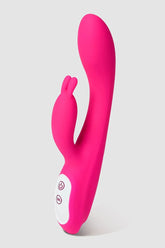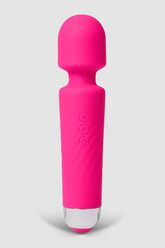Safe Homemade Sex Toys: A DIY Guide for Women
Let’s be honest—most of us have looked at a few household items and wondered, “Could this… work?” It’s not strange at all. More women are experimenting with homemade sex toys because it feels private, affordable, and oddly creative. You don’t have to order something pink and shiny online to learn what you like. You just need body-safe materials, water-based lubes, and a little imagination.
This step-by-step guide walks you through creating DIY pleasure safely—how to make personal pleasure devices at home that feel safe and enjoyable, not risky or rushed.
Why DIY Sex Toys Appeal to Many Women
For a lot of women, DIY sex toys are about curiosity, not cost. It’s a way to ask your body, “What do you like?” without feeling shy or judged.
According to Women’s Health (2024), exploring homemade sex can actually teach you more about your textures and sensations—things like rhythm, warmth, pressure, and softness. It’s not just about climax; it’s a learning process.
I think that’s what makes it special: you get to explore on your terms. No noise, no pressure, just you and your own rhythm.
Safety First: Avoid Sharp Edges and Unsafe Materials
Now, here’s the serious part. Not everything around the house is your friend in this situation. Before you try anything, check it like you’d check food before eating it—clean, safe, and no sharp edges.
Never use:
- Glass that isn’t made for temperature play (it can break).
- Metal unless it’s smooth stainless steel.
- Anything porous, splintered, or rough.
- Food items without protection.
- Objects with no safety base.
Rule of thumb: if it looks like it could hurt, it probably will. Always think body-safe materials first, creativity second.
Step-by-Step Guide: Creating DIY Sex Toys Safely
1. Choose Body-Safe Materials
Stick to surfaces that are smooth and solid.
Good examples include silicone, stainless steel, or food-grade plastic. Even a kitchen tool—like a rounded spatula handle—can work, as long as it’s clean and wrapped properly.
Some people even use toilet paper rolls wrapped tightly in cling film for gentle external pressure. Others play with soft fabric or cushions for lighter contact.
Avoid wood or rubber—they trap bacteria and are hard to clean.
2. Clean Thoroughly with Warm Water
It sounds basic, but it’s critical. Rinse everything in warm water and mild soap before and after use. Let it air-dry completely. A clean tool makes the experience calm, confident, and safe.
If you’re sharing a bathroom or living space, keep things discreet—use a small pouch or drawer to store them.
3. Add a Barrier
A condom is your best friend here. It makes common household items instantly safer. Even something smooth can hide small scratches that only a condom can protect against.
4. Use Water-Based Lubes
This one’s non-negotiable. A small amount of water-based lube makes a world of difference. It helps with friction, keeps things gentle, and won’t damage latex. Avoid oils—they break down condoms and make cleanup harder.
5. Explore Temperature Play
Want to add a little variety? Try temperature play.
- Warm up stainless steel or food-grade silicone in warm water for a soothing heat.
- Chill them briefly in the fridge for a tingly cool feel.
- Always test it on your wrist first. You want comfort, not surprise.
6. Experiment with Textures and Sensations
Each item feels different. A soft cloth might feel nurturing; a firm spatula handle gives steady pressure. A wrapped sponge can create new textures and sensations altogether.
Don’t aim for perfection. Aim for curiosity. Notice how your body responds. That’s the real point of creating DIY experiences—it’s learning through touch.
Creative but Safe DIY Ideas
Here are some homemade sex ideas women often try safely:
- Electric toothbrush handle: use the smooth back for mild vibration.
- Silicone spatula: flexible and food-grade, good for soft pressure.
- Pillow play: place a towel or small cushion between your thighs for hands-free movement.
- Massage wand: a simple back massager can double as a personal pleasure device if cleaned carefully.
Everything here is about safety first. You can be playful and cautious at the same time.
What to Avoid Completely
Ignore the wild stuff you see online. Please.
- Raw fruit or vegetables? They can break or cause irritation.
- Glass bottles or jars? Dangerous.
- Battery tools not made for skin? Also no.
- Anything that heats uncontrollably or vibrates violently.
If you want consistent vibration, just go for real personal pleasure devices. They’re made for this.
Making It Feel Comfortable
Set the tone before you start. Maybe play soft music, lock the door, take a deep breath.
Go slow. Begin with external touch and explore pressure gradually. Use plenty of water-based lubes—even a small amount helps. Relax your muscles, focus on what feels good.
Most importantly, let go of the idea that it has to be “productive.” Homemade sex is about discovery, not performance.
When to Move to Store-Bought Toys
Think of DIY as your introduction, not your forever. Once you figure out what kind of stimulation you enjoy—maybe temperature play or a certain texture—you can switch to store-bought options made with body-safe materials.
Professional toys last longer, are waterproof, and designed to handle regular use. Start small: bullet vibrators, app-controlled tools, or soft silicone toys all feel natural upgrades.
Important Safety Checklist
- Use clean, body-safe materials.
- Avoid sharp edges or porous surfaces.
- Wash with warm water and mild soap.
- Cover items with condoms if needed.
- Always use water-based lubes.
- Stop immediately if you feel discomfort.
These steps make homemade sex less of a “hack” and more of a self-care ritual.
Final Thoughts
Exploring pleasure with homemade sex toys doesn’t have to be risky—it can be thoughtful, curious, and surprisingly grounding. Using food-grade or stainless steel tools, keeping things clean, and going at your own pace turns experimentation into self-connection.
Pleasure should never feel rushed or forced. With patience and safety in mind, creating DIY toys becomes more than curiosity—it’s an act of care.
So take your time, stay curious, and make it safe and enjoyable.





















